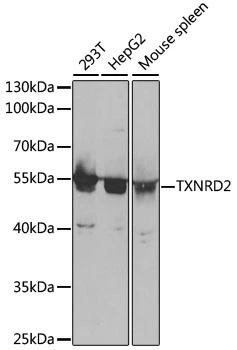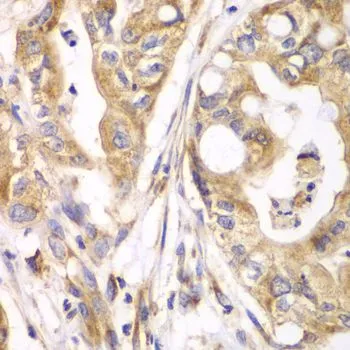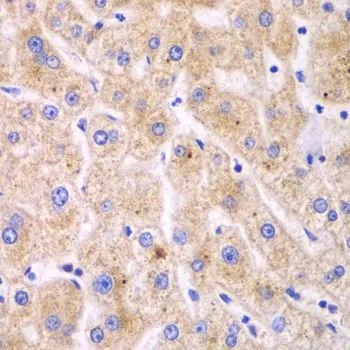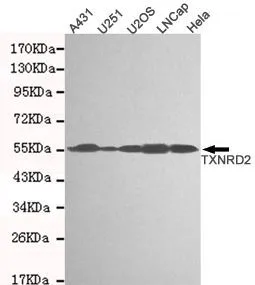
WB analysis of various sample lysates using GTX16430 TXNRD2 antibody. Dilution : 1:1000 Loading : 25microg per lane
TXNRD2 antibody
GTX16430
ApplicationsWestern Blot, ImmunoHistoChemistry, ImmunoHistoChemistry Paraffin
Product group Antibodies
TargetTXNRD2
Overview
- SupplierGeneTex
- Product NameTXNRD2 antibody
- Delivery Days Customer7
- Application Supplier NoteWB: 1:500 - 1:2000. IHC-P: 1:50 - 1:200. *Optimal dilutions/concentrations should be determined by the researcher.Not tested in other applications.
- ApplicationsWestern Blot, ImmunoHistoChemistry, ImmunoHistoChemistry Paraffin
- CertificationResearch Use Only
- ClonalityPolyclonal
- ConjugateUnconjugated
- Gene ID10587
- Target nameTXNRD2
- Target descriptionthioredoxin reductase 2
- Target synonymsGCCD5; selenoprotein Z; SELZ; thioredoxin reductase 2, mitochondrial; thioredoxin reductase 3; thioredoxin reductase beta; thioredoxin reductase TR3; TR; TR3; TR-BETA; TRXR2
- HostRabbit
- IsotypeIgG
- Protein IDQ9NNW7
- Protein NameThioredoxin reductase 2, mitochondrial
- Scientific DescriptionThe protein encoded by this gene belongs to the pyridine nucleotide-disulfide oxidoreductase family, and is a member of the thioredoxin (Trx) system. Three thioredoxin reductase (TrxR) isozymes are found in mammals. TrxRs are selenocysteine-containing flavoenzymes, which reduce thioredoxins, as well as other substrates, and play a key role in redox homoeostasis. This gene encodes a mitochondrial form important for scavenging reactive oxygen species in mitochondria. It functions as a homodimer containing FAD, and selenocysteine (Sec) at the active site. Sec is encoded by UGA codon that normally signals translation termination. The 3 UTRs of selenoprotein mRNAs contain a conserved stem-loop structure, the Sec insertion sequence (SECIS) element, which is necessary for the recognition of UGA as a Sec codon rather than as a stop signal. Alternatively spliced transcript variants encoding different isoforms, including a few localized in the cytosol and some lacking the C-terminal Sec residue, have been found for this gene. [provided by RefSeq, Jun 2017]
- Storage Instruction-20°C or -80°C,2°C to 8°C
- UNSPSC12352203







